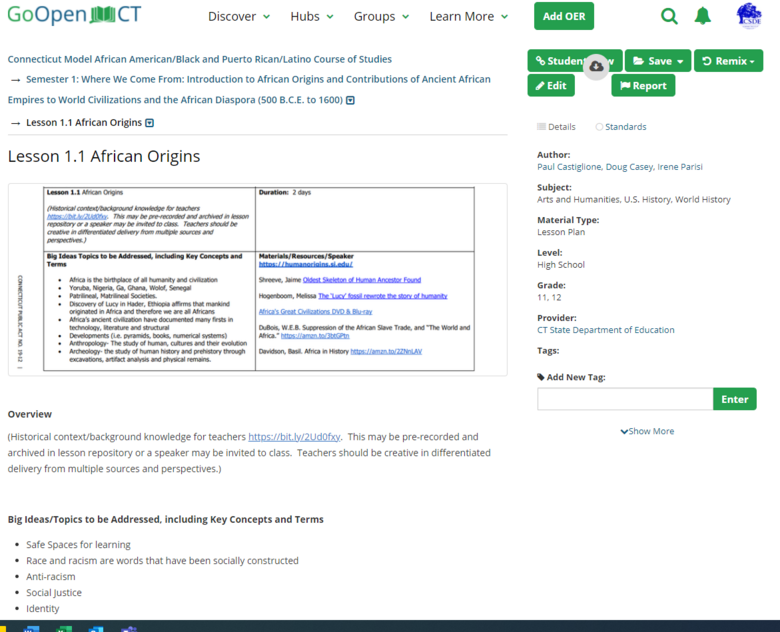Lesson 1.1: African Origins

Overview
(Historical context/background knowledge for teachers https://bit.ly/2Ud0fxy. This may be pre-recorded and archived in lesson repository or a speaker may be invited to class. Teachers should be creative in differentiated delivery from multiple sources and perspectives.)
Big Ideas Topics to be Addressed, including Key Concepts and Terms
Africa is the birthplace of all humanity and civilization
Yoruba, Nigeria, Ga, Ghana, Wolof, Senegal
Patrilineal, Matrilineal Societies.
Discovery of Lucy in Hader, Ethiopia affirms that mankind originated in Africa and therefore we are all Africans
Africa’s ancient civilization have documented many firsts in technology, literature and structural
Developments (i.e. pyramids, books, numerical systems)
Anthropology- The study of human, cultures and their evolution
Archeology- the study of human history and prehistory through excavations, artifact analysis and physical remains.
Materials/Resources/Speaker
Shreeve, Jaime Oldest Skeleton of Human Ancestor Found
Hogenboom, Melissa The ‘Lucy’ fossil rewrote the story of humanity
Africa's Great Civilizations DVD & Blu-ray
DuBois, W.E.B. Suppression of the African Slave Trade, and “The World and Africa.” https://amzn.to/3btGPtn
Davidson, Basil. Africa in History https://amzn.to/2ZNnLAV
Hine, Darlene, et al. African America: A Concise History, Combined Volume (5th ed ) https://bit.ly/3azzNnr
Recommended Learning Activities, including UDL Principles/Scaffolded Supports and Asynchronous and Synchronous Learning Opportunities
Day 1
Initiation: Ask students to describe Africa in 3 words, make a wordle online, have students look at the themes and connect to the Unit of study. Introduce key vocabulary from Famed Lucy Article: hominids, bipedal primates, potassium argon dating, radiometric dating.
Activity: Students to read Famed “Lucy” Fossils Discovered in Ethiopia, 40 Years Ago Lucy's Story | Institute of Human Origins
Discuss the perspective and perhaps motives of the writer through their choice of title, images, words and phrases. Discuss the implications of the discovery on a social-political level. Provide graphic organizers for note-taking.
In small groups, students will begin planning a presentation of how humanity began using evidence of primary and secondary sources. They will watch a video: Mitochondrial Eve and Homo Sapiens in Africa’s Great Rift Valley and discuss where other earlier human fossil remains were found.
Using the Smithsonian National Museum of Natural History website https://humanorigins.si.edu/ as an additional resource, groups can choose a more focused topic as part of research for presentations.
Closing: Groups should be advised they will have 15 minutes at the opening of next class to prepare 5 minute claim/counterclaim presentations.
Day 2
Evidence of Learning: Provide students with 15 minutes at the beginning of class to finalize presentations. In small groups, students will have 5 minutes to present their claim/counterclaim of how humanity began using evidence (e.g., maps, primary and secondary sources).
Home Links/Reflections to Affirm Identity
Discuss your findings about African origins with a family member. What is their viewpoint? How is this the same/different than your families’ cultural and/or religious beliefs?
Options for Content Continuity Across History Courses and Interdisciplinary Integration
Arts
Science
Extensions/Experiential Opportunities
Article Review: The Gold Trade in Ancient & Medieval West Africa-